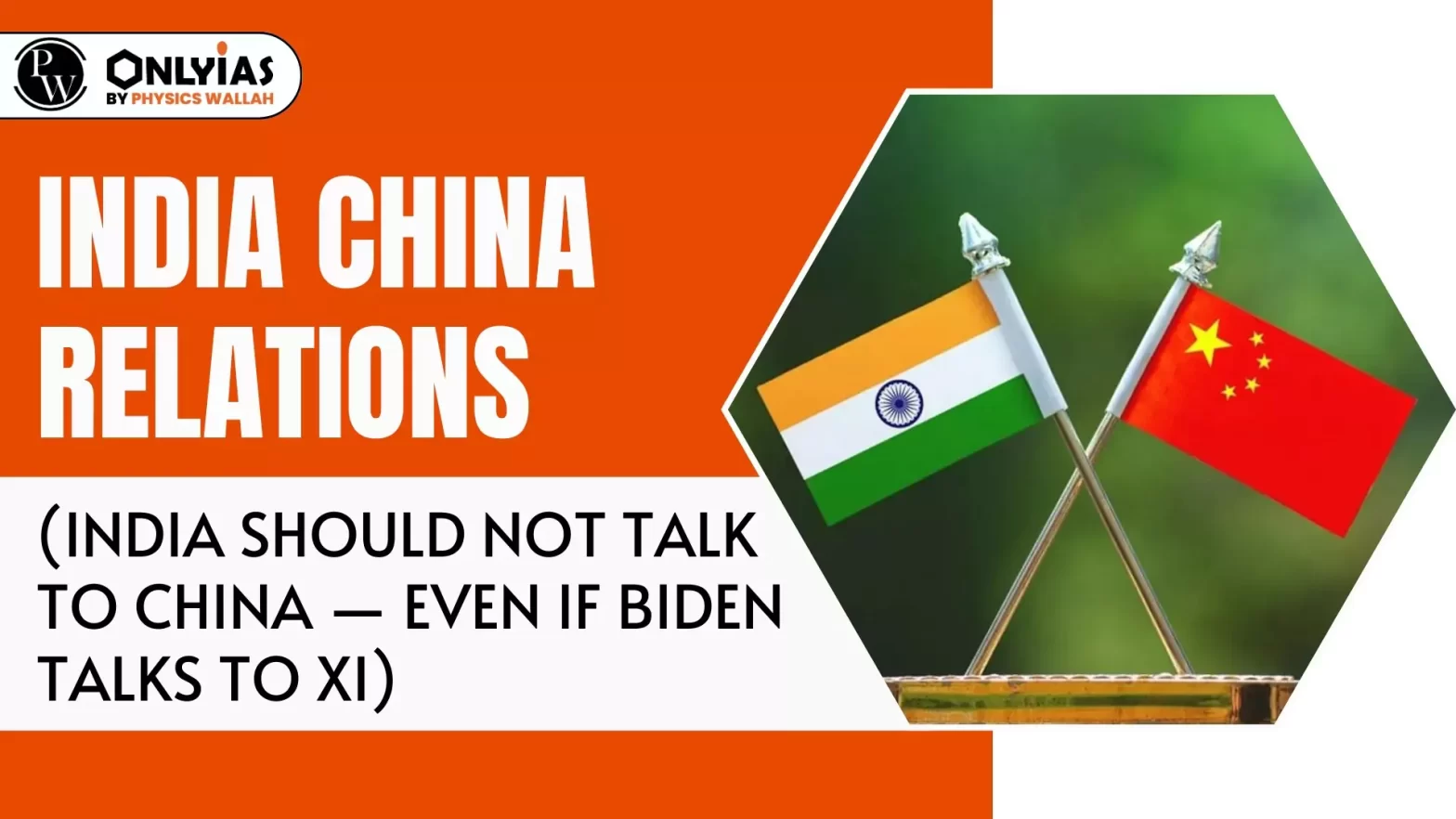Context:
| Relevancy for Mains: Effect of policies and Politics of Developed and Developing countries on India and its interests. |
India China Relations – Priority & Strategy
- Differences in Priorities: China wants India to put the border question aside and resume normal political and economic engagement. But for India, the state of the relationship will depend on the state of the border.
- India’s three-fold Strategy:
- Continual military dialogue,
- Effort to reduce India’s economic interdependence with China, and
- Keep political engagement on hold.
Arguments for Change in India’s current approach to China:
- Diplomatic and Tactical: It suggests that India should not be the only Quad nation that is not engaged in a dialogue with China.
- Changing Dimensions of the US-China Relations: As per this argument, the dialogues and relations between the US and China marks a significant shift and it would reduce India’s position and significance.
- It concludes that India must reopen political and economic dialogue with China.
Arguments against for Change in India’s current approach to China:
- Independent Geopolitical Consideration: India does not follow its Quad partners on all steps they take in relation to China. The geopolitical considerations of India’s China policy have an independent logic.
- Example: India has not joined the Quad’s freedom of navigation operations in the western Pacific.
- Lack of Promised Peace Restoration: China is not promising to quickly restore peace on the border if India resumes political and economic dialogue.
- Skepticism about Summit Outcomes: Summits between leaders rarely translate into significant breakthroughs.
- Example, India and China’s meeting at Wuhan in 2018 and Chennai in 2019.
- The hopes for a reset in bilateral relations after the 2017 Doklam crisis crashed in 2020 when China sought to alter the territorial status quo in eastern Ladakh unilaterally.
- Also, two summits (in Bali and San Francisco) between the US and China over the last year do not mean there is a change in the structure of the intensifying US-China rivalry.
The Path Ahead:
- Increase the Absolute Power: Assessing shifts in great power relations and responding to them is an integral part of any nation’s foreign policy and it’s time for India to focus and work on the absolute increase in its comprehensive national power.
- Seize the Opportunity: India should focus on seizing the current opportunities with the US and the West to accelerate India’s rise in the global power structure, reduce the strategic gap with China, and enhance military deterrence against China.
- As the relative rise in the international system makes India more self-assured in dealing with the great powers.
- Follow Current Approach: This is a moment for India to stay the course with its current approach to China. Renewing political and economic engagement does not solve India’s problem of rebuilding peace and tranquility on the disputed frontier. Only credible military arrangements can.
- Limiting economic exposure and suspending the political dialogue are persuading China to restore trust and stabilize the border.
Conclusion:
In the complex landscape of India China relations, the question of whether India should engage in political and economic dialogue with China, particularly in the face of shifting global dynamics, has sparked a debate between the need for strategic autonomy and the potential benefits of diplomatic engagement.
![]() 23 Nov 2023
23 Nov 2023

